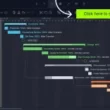Asyncio is a Python library for writing asynchronous code. Asynchronous programming allows a program to perform multiple tasks concurrently, rather than waiting for one task to be complete before starting the next. This can be useful for improving the performance of programs that perform tasks that take a long time to complete, such as making network requests or reading and writing to a database.
Asyncio uses the async/await syntax to define asynchronous functions and to pause and resume them as needed. Here’s a simple example of an asynchronous function that uses asyncio to pause and wait for a delay:
import asyncio
async def say_after(delay, what):
await asyncio.sleep(delay)
print(what)
async def main():
print("started")
await say_after(1, "hello")
await say_after(2, "world")
print("completed")
asyncio.run(main())
This code will print “started”, then “hello” after a delay of 1 second, followed by “world” after a delay of 2 seconds. Finally, it will print “completed”. Asyncio allows the program to perform other tasks while waiting for the delays to complete, rather than blocking until they are finished.
I hope you liked it!





